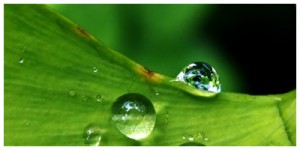© Lu Barcelos
Slowly, curiously exposing bare skin – first a calf, a shoulder, then the waist, and a peek at buttocks. The innocent desire between man and woman is tangible to the audience. The two dancers act on it – and then she breaks free from him, only to be caught and touched by him, until they both discover the wondrous effect of a ticklish belly. This is one of the most sensual scenes in Céu na Boca (Up in the mouth), performed by the Brazilian dance company Quasar, founded 1988, in the Luxembourg Grand Théâtre on 10 April 2013. Henrique Rodovalho’s choreography is charged with emotions and portrayals of the human pursuit of happiness. Céu na Boca, an 80-minute show (no intermission), is danced by eight dancers, four women and four men (Andrey Alves, Carolina Ribeiro, João Paulo Gross, José Villaça, Marcos Buiati, Martha Cano, Paula Machado, Valeska Gonçalves), the men’s muscular, sculpted bodies speaking of great strength, the women’s equally strong, toned and yet feminine bodies pleasing to the eye, and all of them clad in simple, sheer garments (costumes: Cássio Brasil). As the name of the choreography suggests, mouths are playing quite a role as well – as for instance in one scene that reads like a kiss-dance performed by the eight dancers in pairs; it is an illustration of desire, love and humor, frustration and confusion – motives that run like a common thread through the entire choreography.
The various different states of mind presented through the choreography – admiration, hate, sadness, happiness, for example – are made even more dramatic by the lighting design (Henrique Rodovalho, light: Sergio Galvão) and music (Hendrik Lorenzen, Taylor Deupree, Marc Leclar, Goldie…), from electronic sounds to instrumental pieces of the sixties. With a sudden spotlighting of the two dancers described above the viewer is transported at once into a dreamlike world and is witness to a magical transformation: in the former scene, one dancer is left laying on stage, he is unable to get up to escape when four female dancers appear on stage with a mystic aura. One of them approaches the dancer still struggling to rise, with curiosity and fairy-like innocence exuding from the woman, and fear, caution yet interest going on visibly in the man. Upon coming closer she extends a finger as if to touch him with a spell – and with the concomitant effect of lighting and music, as if by magic, the man has come to a stand. And for what seems like an eternal moment, there is nothing but these two dancers, the plain stage, and quiet awe. Thus begins a new scene, in which just these two dancers are performing a smooth and elegant choreography, full of wonder and innocent attraction, and yet here, too, illustrating even humor and irony.
The expressiveness of the dancers’ movements is extraordinary, and contains elements from martial arts and even pantomime, flowing movements with many jumps and turns. The viewer is invited to, no forced to take in every move and facial expression of the dancers, even the voices and sounds they make – whether in one scene, where the dancers, with black encircled eyes, are crawling and wriggling on the stage floor like fantasy creatures and making funny infant-like sounds – much to the audible entertainment of the audience; or in another scene incorporating elements of martial arts, with smooth movements performed with high body tension and energy and hissing sounds, evoking images of prowling predators. In the end, what makes his choreography stand out is that Henrique Rovodalho is constantly exploring and finding new body and mind constellations, playing with but also challenging traditional role allocations; and it is this combined with the multitude of expressions of emotions that capture the audience’s breath and heart.
Johanna Wolter


